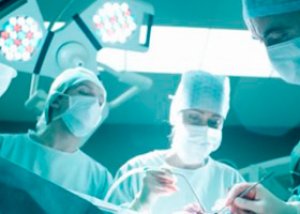
All iLive content is medically reviewed or fact checked to ensure as much factual accuracy as possible.
We have strict sourcing guidelines and only link to reputable media sites, academic research institutions and, whenever possible, medically peer reviewed studies. Note that the numbers in parentheses ([1], [2], etc.) are clickable links to these studies.
If you feel that any of our content is inaccurate, out-of-date, or otherwise questionable, please select it and press Ctrl + Enter.
Anorectal abscesses: causes, symptoms, diagnosis, treatment
Medical expert of the article
Last reviewed: 04.07.2025

Anorectal abscesses (paraproctitis) are limited accumulations of pus in the pararectal area. Abscesses usually develop in the anal crypts. Symptoms include pain and swelling. Diagnosis is made by examination and CT or MRI of the pelvis for deeper abscesses. Treatment involves surgical drainage.
Abscesses may occur in various areas surrounding the rectum and may be superficial (subcutaneous) or deep. Perianal abscesses are superficial, just beneath the skin. An ischiorectal abscess is deeper, extending from the sphincter into the ischiorectal space below the levator ani muscle; the abscess may extend to the opposite side, forming a "horseshoe" abscess. An abscess above the levator ani muscle (i.e., supramuscular abscess, pelviorectal abscess) is deep enough to extend into the peritoneum or abdominal organs; this abscess is often a consequence of diverticulitis or pelvic inflammatory disease. Occasionally, an anorectal abscess is a manifestation of Crohn's disease (especially of the colon). Usually a mixed infection is present, including Escherichia coli, Proteus vulgaris, Bacteroides, streptococci with a predominance of staphylococci.
Symptoms of anorectal abscess
Superficial abscesses may be associated with severe pain; swelling in the perianal area, hyperemia, and pain are characteristic. Deeper abscesses may be less painful but may cause signs of intoxication (e.g., fever, chills, malaise). Local signs of an abscess are sometimes absent on examination, but digital rectal examination may reveal tenderness of the intestinal wall and a fluctuating protrusion of the wall. High pelviorectal abscesses may cause lower abdominal pain and fever without signs from the rectum. Sometimes fever is the only symptom of the disease.
What do need to examine?
How to examine?
Treatment of anorectal abscess
Spontaneous rupture of the abscess should not be allowed; prompt incision and adequate drainage of the abscess are necessary. Superficial abscesses may be drained in the office; deeper abscesses require drainage in the operating room. Patients with fever or diabetes mellitus require antibiotics (eg, ciprofloxacin 500 mg IV every 12 hours and metronidazole 500 mg IV every 8 hours, ampicillin/sulbactam 1.5 g IV every 8 hours); patients with subcutaneous abscesses do not require antibiotics. Anorectal fistulas may develop after drainage.


 [
[